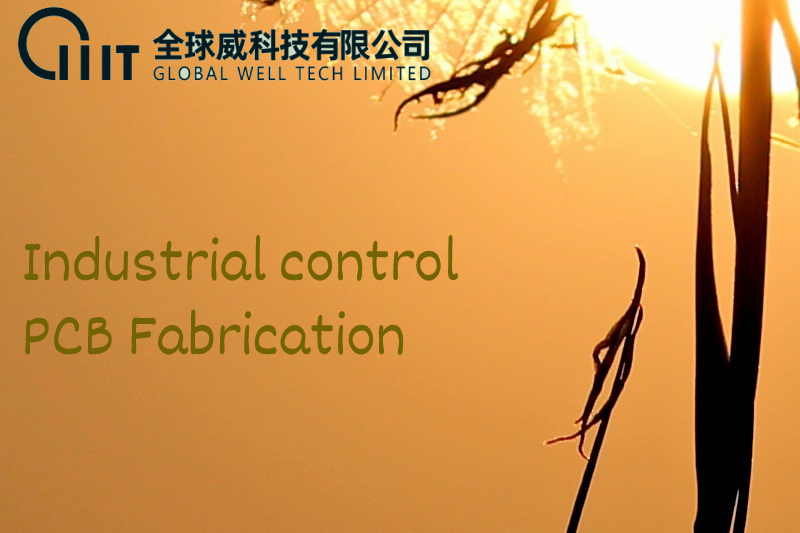Categorie
Industrial Control PCB Fabrication
Industrial Control PCB Fabrication
1.Industrial Control PCB Definition
Industrial control PCB is specific circuit board used for industrial control operations. They are different from commercial off-the-shelf boards as they are created according to specific requirements. These boards have general-purpose inputs and outputs (IO) that can be used to connect peripheral devices such as valves, motors, and sensors.
There are also dedicated industrial control PCB designed for specific operations, such as temperature control boards. These boards have inputs connected to a thermocouple and outputs connected to heating contractors, which control the heat of devices and environments.
Industrial control PCB is made of two materials: a non-conductive base and copper traces and pads. The copper traces and pads serve as interconnections between components assembled on the PCB board. These boards can be single layer, double layer, or multilayer PCB, depending on the complexity of the operations. For single-layer boards, there are copper traces on only one side, while for two-layer boards, traces are on both sides.
These boards are also known as conventional PCB as they have programming features that allow users to set the functions according to their requirements. A programming logic controller (PLC) is an example of a general industrial control board. It operates by writing different programs and compiling inputs to perform various operations. It has digital input, analog input ports, and high-speed counter ports that provide communication operations.
2.Industrial PCB Design Factors
*Component Layout
The placement of components on the board layout is a critical factor to consider when designing industrial control PCB boards. Improper component placement can affect the reliability and performance of the final product. During PCB board design, special care must be taken to ensure that components are installed on the board with a minimum of 100 mils space between the edges of the board and the mounted components. This ensures that the dimensions of the board and mounted holes are consistent.
*EMI & RFI
In industrial applications, it is crucial to minimize the effects of Electromagnetic Interference (EMI) and Radio Frequency Interference (RFI), which can cause noise and disrupt the operation of the PCBA. To this end, FS Technology offers several strategies:
--Board layout: To reduce the risk of noise coupling, separate high-frequency circuits from low-frequency circuits and keep signal traces away from power and ground planes. Signal traces should be as short as possible, while power and ground planes should be as large as possible and routed with low inductance hole connections to minimize the impedance of the power network.
--Filtering components: Add filtering components such as capacitors and inductors to power and signal lines to filter out unwanted noise.
--Grounding and Shielding Techniques: Enclose sensitive components in Faraday cages to block EMI and RFI.
--Component Selection: Choose circuit board components with high-quality grounding and shielding. Use shielded cables to connect the board to external devices to prevent unwanted signal coupling.
3.Industrial Control PCB Material
The selection of materials for PCB manufacturing is critical and should be based on the specific working environment. Materials for PCBs used in industry must be able to withstand harsh conditions, such as high temperature, humidity, vibration, and chemical exposure. Some commonly used materials for industrial PCBs are:
--Polyimide: This high-performance material can withstand extreme temperatures up to 400°C and is often used in aerospace, military, and high-temperature industrial control applications.
--Ceramic: A ceramic PCB is made of a ceramic substrate and metal traces. They have excellent thermal conductivity and can handle high temperatures and harsh chemicals. They are commonly used in power electronics and high-frequency applications.
--PTFE: PTFE or polytetrafluoroethylene is a fluoropolymer with excellent electrical insulating properties that can withstand high temperatures up to 260°C. It is commonly used in high-frequency and microwave applications, as well as harsh chemical environments.
--FR-4: This composite material made of woven fiberglass cloth and epoxy resin is the most commonly used material for general PCBs, including industrial. FR4 PCB has good electrical insulation properties and can withstand high temperatures and chemicals.
4.GWT-Your Valuable Industrial PCB Supplier
Electronics used for industrial applications need to be very stable, durable to fit in extremely harsh conditions, at the same time maintaining long service lives.
Industrial PCB designs and Industrial printed circuit board manufacturing also need to follow strict industrial SIL and IEC standards and create unique design features and form factors for any industrial settings. Equipment Manufacturers in industrial/automation markets now face unique challenges in today’s world: with increasing labor cost, precision, and efficiency requirement. Industrial products need ever-more complex electrical assemblies to be produced with industrial PCB, which require industrial-grade reliability, precision, and flexibility.
Industrial PCB might be in service for several years or even decades. Some of the components you designed it might be obsolete when the next time you need to revise your industrial PCB, it will cost you extra time trying to find suitable alternatives/replacements, not even to mention the time you’ll spend updating your service and component documentation over the product’s lifespan. Our industrial PCB products are used in a broad range of applications such as:
--Power supply units
--Robotics
--Electronic switch gears
--Industrial drives & inverters
--Electronic test & measurement equipment
--Energy control systems
--Industrial smart meters
--Electronic smart labels
--Industrial Lighting systems
0users like this.



